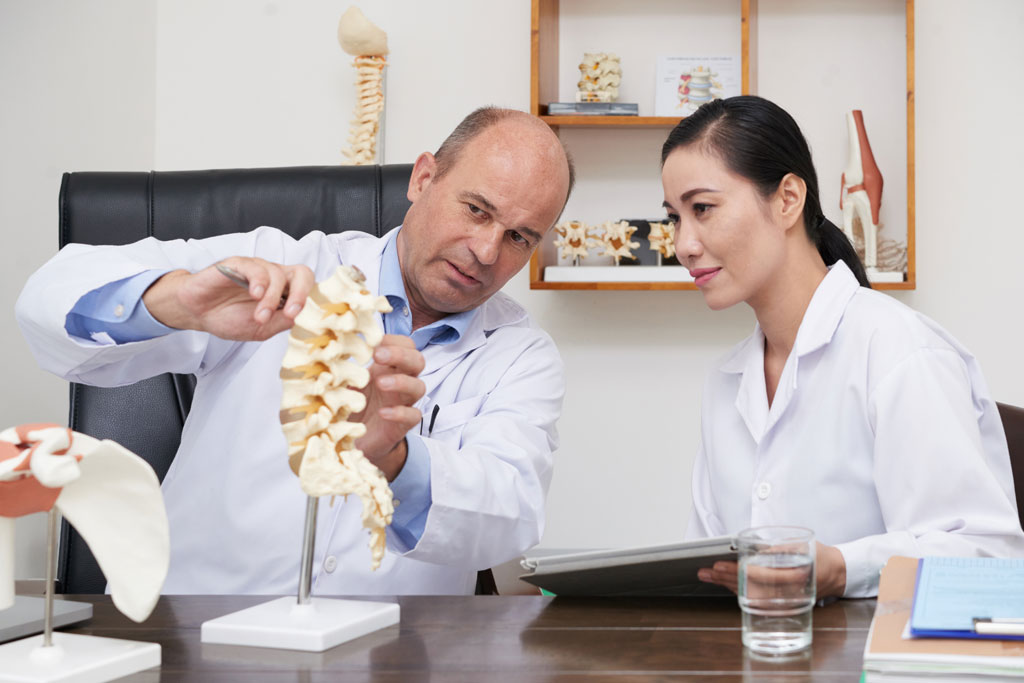Here we will go over how to cope with myelomalacia and find a support system.
Myelomalacia of the spine is a rare condition that occurs when the spinal cord softens. This softening can lead to volume loss in the spine and injury. Common symptoms include pain, paralysis, loss of motor function, sudden jerking of the limbs, and more.
Being diagnosed with myelomalacia is an emotional and life-changing moment. Having a support system and coping skills will be essential to living with this condition.
Let’s jump right in.
Talk To Loved Ones
One of the best things you can do for yourself while battling a serious health condition like myelomalacia is to talk to your friends and family.
When talking to your loved ones, educate them on the severity of your condition and let them know how they can help. You may need physical comfort, emotional support, or help doing chores or running errands
Having loved ones in your support system is incredibly helpful. If you can’t find support at home, you may want to consider finding it in other places.
Go To Therapy
Many individuals with health issues find coping difficult, and going to therapy can be helpful.
A therapist can help you process your emotions, come up with a plan for how to handle the situation mentally, and offer general advice.
Seeing a therapist for physical pain is common because it takes a toll on your mindset, and over time, conditions like depression and anxiety can develop.
Talk To Your Primary Care Provider
Your primary care provider is another member of your support system that can offer much more than emotional support.
Your primary doctor will be the person responsible for helping you create a treatment plan and cope with the physical symptoms of myelomalacia. Your primary may refer you to a specialist, but either provider will be able to help you prescribe your medications, send you to physical therapy and give advice on how to relieve pain at home.
Join a Support Group
Myelomalacia may be a rare condition, but there are online support groups available. For example, Reddit and Facebook have myelomalacia support groups with thousands of members that relate to your struggles.
In these groups, you can ask other members for advice on pain management and how to cope.
Talking to individuals who share a health condition can be comforting because not many people in your life can understand what you’re going through.
Use Marijuana
Marijuana is highly beneficial to myelomalacia patients because it can alleviate many of the condition’s symptoms.
Myelomalacia symptoms that marijuana can help include:
- Pain
- Inflammation
- Muscle tension
- Hypertension
- Mood disorders
If you live in a state that only has medical marijuana and not recreational, you can apply for a medical marijuana card. Myelomalacia is a qualifying condition in most states.
Say you live in a state that has yet to legalize marijuana at all, if that is the case then you can still find relief from CBD products (CBD is legal in all states.)
Use Self-Care
No matter the health condition a person has, practicing self-care can help you cope.
Self-care can be activities like going to the gym, taking a bubble bath, watching a movie, or going to the park. As long as you are doing something you enjoy, you are practicing self-care.
Self-care is an essential part of the coping process because it teaches us to be mindful of our emotional needs while struggling physically.
Know Your Limits
Unfortunately, myelomalacia patients may have limitations on what they can do physically. At times, certain actions like moving your limbs can become difficult. It is important to know what movements trigger these difficulties and be familiar with where you should set limits.
For example, if bending down is painful, you should find a new way to get low such as squatting.
If you learn to work within your limits, your pain will decrease which makes coping easier.
Know How To Be Comfortable
Myelomalacia pain can last for hours, days, or longer. This pain may be hard to relieve which is why knowing how to be comfortable is essential.
When pain begins, pay attention to which positions, movements, and actions decrease the pain.
Over time, you can develop a plan of action that helps you feel comfortable when the pain hits.
Coping with pain is hard,but knowing you have a comfort plan in place eases the mind and simplifies the coping process.







